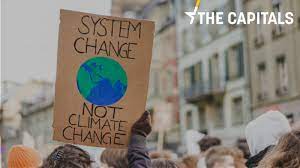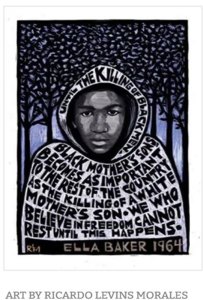Language matters. If we talk only about “global warming” or “climate change”, those terms don’t convey anything like the scale of the devastation that the climate crisis is already inflicting on humankind. So let’s call it what it is: A very present climate crisis.
Figuring out how to respond to this crisis is made many times harder by the fact that it is closely entwined with crises of governance collapse at many levels around the world.
The most impactful level of entwinement has long been the global. Global discord and the often-blind selfishness of the leaders of rich countries mean that these countries still continue to pump greenhouse gases (GHGs) into the atmosphere at a rate that guarantees there is no prospect that worldwide GHG emissions—and therefore global heating—will be ended within the next 25 years.
*******************
Re-)connecting the peace movement with more younger Americans
In light of the above, I would propose a multi-faceted plan that aims to meet members of Generations X through Z—and even Gen Alpha, young people born since 2013—where they are. And that, for the people among them inclined to be activists would seem to be in the spaces around these issues:
- the climate crisis
- gun violence
- racial justice
- growing economic inequities.
Of these issues, the climate crisis is the one that, it seems to me, has the greatest number of evident connections with the goals and methods of any peace movement. Firstly, since it is clearly a global and already-present crisis, it urgently requires cooperative global action if is to be addressed with any hope of success; and the continuation of active wars and conflicts blocks any chance of such action.
Second, the preparing and waging of war are truly gas-guzzling, high-emitting enterprises. The U.S. Department of Energy presents lots of data on this web-portal about both the energy use of different U.S. government agencies, and their levels of emissions. Here are the data for 2022 on fuel used by various agencies:







